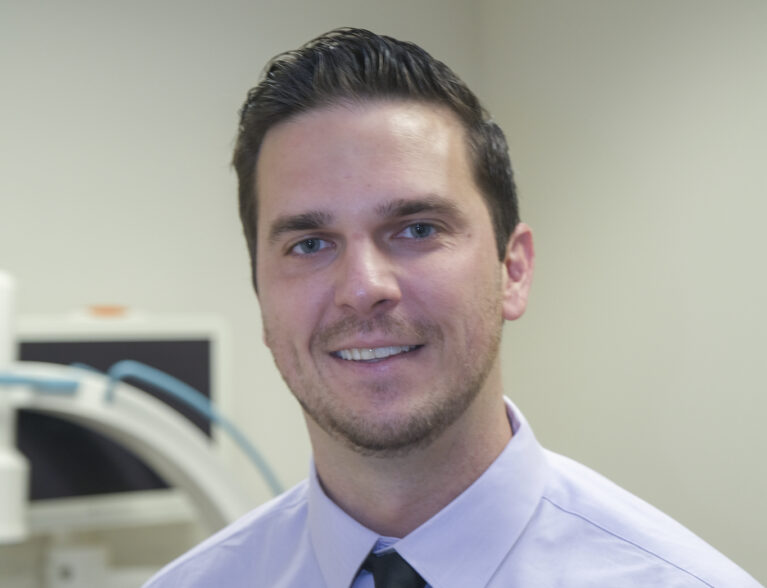
The way you walk is as individual and unique as you are, and some surgeons are now using an approach to knee replacement that gives you back your natural gait after surgery.
Traditionally, surgeons have relied on a mechanical alignment technique that involves aligning the knee components to standardized, anatomically based angles. Kinematic alignment is an alternative technique in total knee arthroplasty that prioritizes aligning the knee implant to the patient’s natural joint orientation rather than following a standardized mechanical axis.
“Kinematic alignment aims to restore the patient’s native knee orientation anatomy as it was before they developed arthritis by allowing the knee to have the native soft tissue tension that it had previously to make it feel more normal postoperatively,” said Dr. Kevin Fox, an orthopedic surgeon at Orthopaedic Center of Vero Beach.
“That’s done by resurfacing the knee and only removing the amount of bone and remaining cartilage that the implant size is. It’s personalized to each patient in a way that everybody’s knee is a little bit differently oriented. The traditional approach to knee replacement changes about 80 percent of the patient’s knee orientation, [sometimes] leaving them with an unnatural gait.”
The procedure involves placing the components of the prosthetic knee to match the pre-disease alignment of the patient’s leg, taking into account the functional alignment of the knee throughout daily movements.
In traditional alignment, surgeons aim to position the knee implant perpendicular to the ground, aligning it to a mechanical axis that is the same for every patient. This method focuses more on the structure of the leg rather than the individual attributes of the knee joint. While this standard alignment has been very effective for many patients, it can create an unnatural feeling in others.
According to a study published in Orthopedic Review in March 2024, kinematic alignment aims to restore the natural joint by precisely aligning the femoral and tibia implants on the knee’s three kinematic axes. “To achieve accurate restoration of the native joint line, precise resection is essential. Several techniques are utilized for this purpose such as conventional calipered measurements, patient-specific instrumentation, computer navigation and robotic assisted surgery,” the study said.
“When you try to put in a one-size-fits-all knee replacement, you have to release ligaments and muscles and try to make the tissue balance equal,” Dr. Fox continued. “But if you’re just resurfacing the knee, it feels like it used to and you don’t have to do any ligament or muscle releases.” It makes it possible for people to forget “that they ever had a knee replacement.”
Due to the more personalized nature of the procedure, patients who undergo kinematic alignment may experience faster recovery times, too.
A study published in the Journal of Bone and Joint Surgery found that patients receiving kinematic alignment had improved early functional outcomes, reporting less pain and faster return to daily activities compared to those who received traditional knee replacements.
“Typically, patients have more function and are moving well within the first couple of weeks after surgery, but ultimately for any knee replacement, it takes about two to three months to be back to feeling yourself,” Dr. Fox added.
Kinematic alignment has also been associated with less postoperative pain. Studies suggest that this alignment method reduces stress on soft tissues because the knee components are placed in alignment with the patient’s unique bone structure, minimizing unnecessary strain. Because kinetic alignment mirrors the knee’s original anatomical structure, it better distributes the load on the joint, potentially reducing wear and tear over time.
When asked about the longevity of the implants, Dr. Fox said they are expected to last 20 to 30 years, although long-term data on their durability is still limited.
Kinematic alignment requires a high level of surgical precision and not all orthopedic surgeons are trained in this technique.
Ultimately, the decision between kinematic and mechanical alignment should be made in close consultation with an experienced orthopedic surgeon, taking into account your individual needs, anatomy and activity levels.
Dr. Kevin Fox is a Vero Beach native. He obtained his medical degree from Campbell University and did his orthopedic surgery residency at the HCA Florida/USF Morsani College of Medicine: Largo Hospital Program. He completed his fellowship at Cedars-Sinai Medical Center in Los Angeles. His office is in Orthopaedic Center of Vero Beach, 1285 36th Street, Suite 100. Call 772-778-2009 to schedule an appointment.



